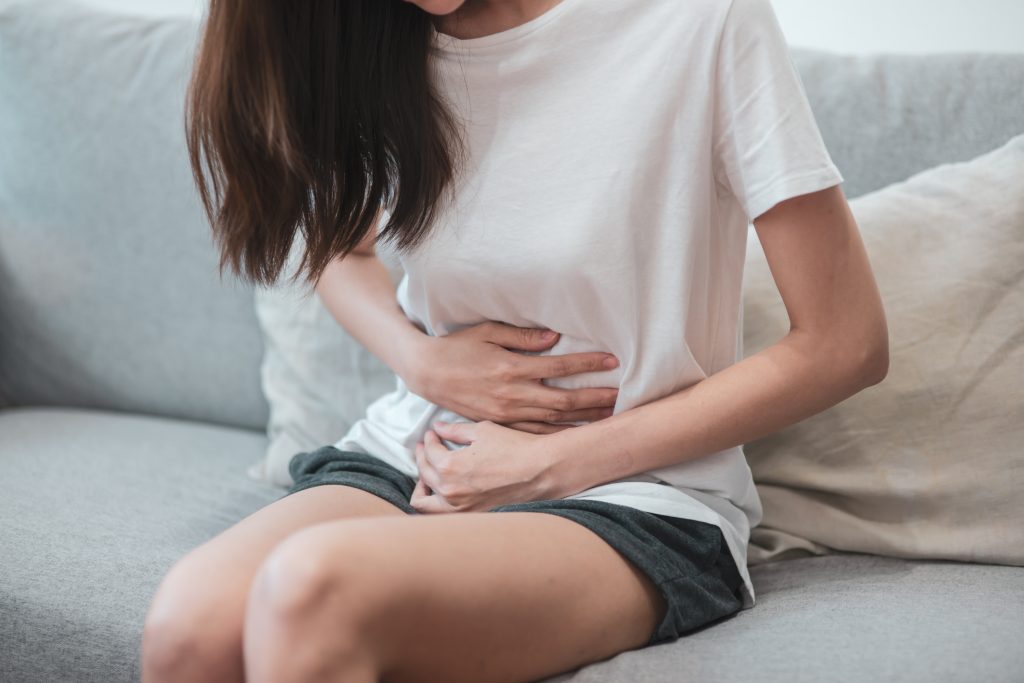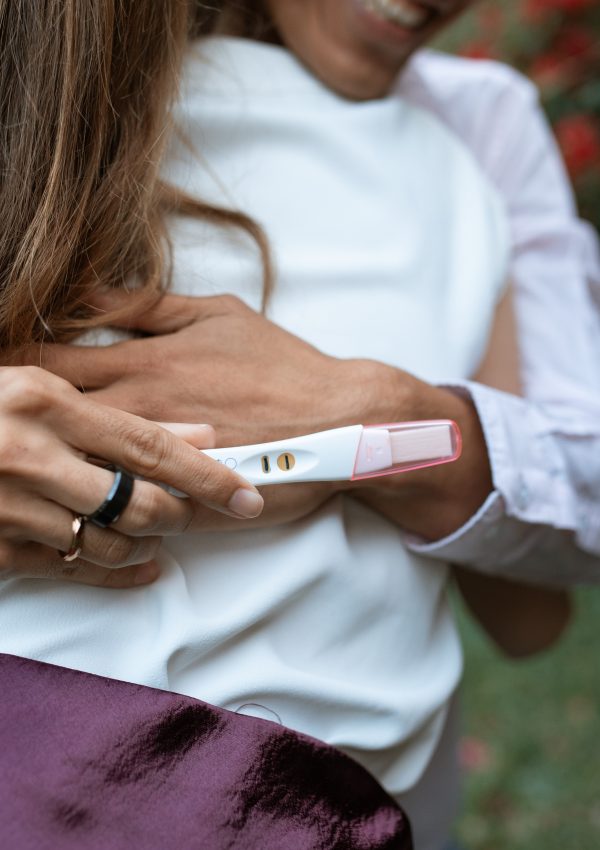Wondering how you can tell that ovulation is right around the corner? Here are 7 ovulation symptoms to look out for.
This post may contain affiliate links, which means I’ll receive a commission if you purchase through my links, at no extra cost to you. Please read full disclosure for more information.
In a normal, healthy, menstrual cycle, there is a process called ovulation and it has to happen in order for you to get pregnant. Ovulation happens right at the end of your fertile window, which is the window of time during your cycle that you can get pregnant. Around the time of ovulation, different hormones fluctuate, which can trigger a number of symptoms.
As you keep track of the number of different symptoms you experience, the more you’ll know what to expect every cycle. In addition, you’ll become more in-tune with your body and have a better idea of when you’re ovulating. Here are 7 common ovulation symptoms you can’t miss.

This post is all about ovulation symptoms to look out for.
What is ovulation?
Ovulation is when an egg is released from an ovary. It is the only time that an egg can be fertilized by sperm in order to make a baby. If the egg isn’t fertilized, it’ll die after 24 hours and the uterine lining will shed (a menstrual period.) It’s also the turning point in your cycle from the follicular phase, to the luteal phase.
In some cases, more than one egg can be released, which would result in fraternal twins (or triplets, etc.). Identical twins are created when only one egg is released, but then splits on its way down into the uterus.
In the days leading up to ovulation, there is a surge of a couple different hormones called estrogen and LH. Estrogen will increase first, which is when you’ll experience most ovulation symptoms. LH will surge second, which triggers the process of ovulation.
Can You Track Ovulation?
In addition to spotting symptoms, you can actually track ovulation by determining your fertile window and by measuring your LH levels. The best way to determine your fertile window is by using a cycle tracking app and an ovulation test together.
With the cycle tracking app, you will be able to enter various measures of info about your menstrual cycle. The app can then use that information to predict your future periods as well as your fertile window.
Since the cycle tracking apps only provide a “best guess”, there is a chance your predicted fertile days can be wrong. This is why ovulation predictor tests are incredibly useful. Ovulation predictor tests will measure both your estrogen levels and LH surge, and will give you much more accurate information about when you’ll ovulate.
7 Obvious Ovulation Symptoms
Increased sex drive
When ovulation is near, you’ll find that you’ll be in the mood to baby dance more often. Estrogen is a sex hormone and when it increases, it’ll naturally increase your sex drive. Your body is basically ready to harbor a baby at this point so it’s signaling to your brain to get to work.
Right after ovulation, your estrogen levels will drop and your progesterone levels will increase. An increase in your progesterone will trigger PMS symptoms or pregnancy symptoms.
Egg-white cervical mucus
The next ovulation symptom to look out for is ‘egg-white cervical mucus’. Throughout your cycle, the consistency of your cervical mucus changes. For instance, right after your period it may be dry, then it gets creamy or sticky, then when you’re fertile it’ll have a slippery, stretchy, consistency like an egg-white.
Egg-white cervical mucus provides the ideal living environment for sperm. It has a high water content and the stretchy feel to it makes it easier for them to move to ultimately reach the egg during ovulation. If you’re not familiar with how egg-white cervical mucus looks or feels, it may be a good idea to start tracking your cycles.
You just feel prettier
In addition to the increased sex drive that you’ll experience when estrogen increases, you’ll also just feel prettier. Estrogen has been known to aid in the production of collagen, which makes your skin look healthy and hydrated. Estrogen can also cause your blood vessels to dilate, which can cause a natural ‘glow’.
Increase in basal body temperature
Another ovulation symptom is a slight drop and then an increase in your basal body temperature (BBT), which is your temperature when you’re at rest. After ovulation, estrogen levels go back down and your progesterone levels increase. The increase in progesterone is what drives the increase in your BBT. Once your BBT rises, it will typically stay elevated until your next period.
The increase in your BBT happens the day after you ovulate at the earliest. It’s very slight and may only be half a degree difference. So if you don’t regularly track your BBT, this won’t be as useful since you have to look at how your temperature trends during your cycle.
There are different tools you can use to track your BBT such as a basal body thermometer or a basal body temperature monitor.
Cervix positioning
The cervix changes positions multiple times throughout your cycle. A little bit before ovulation your cervix will usually be higher, softer, and open. If you’re not used to checking your cervix you may not be able to tell the difference as to whether it’s open or closed or high or low. But when it’s closed it may feel like the tip of your nose, and when it’s open it may feel like puckered lips.
It’ll stay open and soft throughout ovulation to let sperm in and when ovulation is over, it’ll close. Cervix positioning varies from person to person and just because your cervix isn’t soft or high doesn’t mean you’re not ovulating. You really have to know your body to understand your cervix changes throughout the month.
Ovulation pain
1 in 5 women experience ovulation pain that’s also called ‘mittleschmerz‘. It can happen on one or both sides of your abdomen and can occur before, during, or after ovulation. It’s said that it’s caused by egg rupturing from the fallopian tube when it’s released.
I experience it every cycle and it sometimes alternates sides. It’s basically a sharp pain that lasts about a day but it’s not debilitating. It’s a tad annoying but I like knowing that I actually ovulated.
Positive result on an ovulation test
Lastly, this one isn’t really a symptom but a positive result on an ovulation test is a good indicator that ovulation is near. Not all ovulation tests give the same readings but if you get a positive, peak, or high result, it’s a sign that ovulation is around the corner. Like I mentioned earlier, the hormone LH triggers ovulation and most OPKs work by detecting that hormone in your urine.
If you have a condition like PCOS, you may have higher levels of LH at different points during your cycle. So it’s good to look at all of your ovulation symptoms instead of just one or two. In addition, keep track of your own body changes throughout your cycle so that you know what to expect during ovulation.
RELATED POST: How To Determine Your Fertile Window
Do you have any recurring ovulation symptoms every cycle? Let me know in the comments!
This post was all about common ovulation symptoms.




